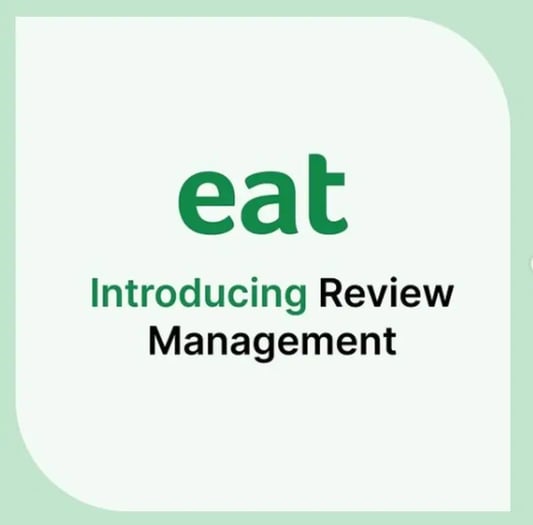Running a restaurant is no easy task, especially when it comes to dealing with customer complaints. In 2023, as dining preferences continue to evolve, it's crucial to be prepared for common grievances. Did you know that if you handle a complaint well, 70% of customers will give your restaurant another chance?
That's why this article is here to help! Get ready to learn expert tips on how to prevent and respond to the most common restaurant complaints. From tackling issues with food and service to mastering technology and hygiene concerns, we've got you covered.
Let's equip you with the knowledge and strategies you need to ensure customer satisfaction, protect your reputation, and thrive in the ever-changing world of restaurants.
Key Takeaways
- Understanding the most common types of customer complaints in restaurants, including food, surrounding, service, technology, and hygiene issues, is crucial for addressing them effectively.
- To prevent complaints, focus on providing consistent and high-quality service, maintaining cleanliness and hygiene, and setting realistic expectations for customers.
- When handling complaints, actively listen to customers, show empathy, resolve issues promptly, and offer suitable solutions or compensation when appropriate.
- Leveraging technology solutions like Eat App can streamline reservation management, personalize guest experiences, and gather valuable customer feedback to reduce complaints and boost satisfaction.
- Training staff to respond to customer complaints involves teaching active listening, empathy, and following the restaurant's specific complaint protocols listed in the training manual with examples.
- Consistently prioritizing customer satisfaction, making improvements based on feedback, and embracing technology can help create a positive dining experience and enhance the restaurant's reputation.
The most common types of customer complaints with examples
In the world of restaurants, customer complaints can arise from various aspects of the fine dining experience. To understand the most common types of grievances, let's take a closer look at each category of common restaurant complaints, along with real-life examples. What do customers complain about most? Here is our full common restaurant complaints list:
Food complaints
Food complaints are perhaps the most frequent and can stem from issues such as quality, price, long wait times, misunderstandings, food poisoning or allergies.
Plus bad food and service is one of the most common reasons why restaurants fail. Customers might express dissatisfaction with the taste or presentation of their meals, feel that the prices don't align with the portion sizes or overall value, experience extended waiting periods, or encounter misunderstandings regarding their dietary restrictions or preferences.
Surrounding complaints
The so-called surrounding customer complaint often revolves around factors that impact the ambiance of the restaurant. Customers may voice concerns about uncomfortable temperatures, excessive noise levels that hinder conversation, or inadequate lighting that affects the overall dining experience. These elements play a significant role in shaping customers' perceptions of a restaurant's atmosphere.
Service complaints
Service complaints can encompass a wide range of issues, including limited payment options, poor seating arrangements, encounters with rude or inattentive staff, or errors in bill calculations. These aspects can significantly impact a customer's overall satisfaction and impression of the establishment.
Technology complaints
Technology complaints have become increasingly common in the digital age. Customers may express frustration on social media when encountering issues like a malfunctioning website, the absence of a reservation option online, inefficient waitlist management leading to excessive waiting times, or the lack of a digital menu for easy browsing.
Hygiene complaints
Hygiene complaints are critical to addressing promptly and effectively. Customers may complain about unclean or unsanitary conditions in restrooms, dining areas, or food preparation areas. Ensuring a high standard of cleanliness and hygiene is paramount in maintaining a positive reputation and safeguarding customer well-being.
By examining these common types of restaurant customer complaints together, restaurant owners and staff can gain valuable insights into areas where improvements are needed. Through proactive measures and attentive customer service, restaurants can effectively prevent and address these issues, enhancing the overall dining experience for their valued patrons.
Tips for preventing restaurant complaints
To prevent restaurant complaints, there are several proactive steps you can take:
- First and foremost, focus on providing consistent and high-quality restaurant service by training your staff to deliver excellent customer service consistently. Set clear service standards in your training manual and ensure that all employees follow them. This will create a positive and welcoming atmosphere for your customers, and prevent customer service complaints.
- Maintaining cleanliness and hygiene is crucial in preventing complaints. Implement rigorous cleanliness and hygiene protocols throughout the restaurant, including regular inspections to ensure that cleanliness standards are met. This not only ensures the safety of your customers but also gives them confidence in the overall cleanliness of your establishment.
- Another key aspect is setting realistic expectations. Clearly communicate wait times, reservation policies, and any limitations upfront to manage customer expectations. Ensure that your menu descriptions are accurate, including details about ingredients, portion sizes, and preparation methods. You can avoid misunderstandings and potential complaints by providing transparent and accurate information.
- Additionally, effectively managing customer expectations regarding wait times and seating arrangements can help minimize dissatisfaction.
By implementing these tips for preventing restaurant complaints, you can create a positive and enjoyable dining experience for your customers.
Hospitality, consistent and high-quality service, maintaining cleanliness and hygiene, and setting realistic expectations are essential in customer satisfaction and loyalty. Remember, prevention is always better than a reactive response to customer complaints.
Tips for handling restaurant complaints
When it comes to handling restaurant complaints, there are effective strategies to ensure customer satisfaction and resolution and avoid poor customer service reviews.
- Listen and empathize with the customer. Give your full attention, actively listen to their concerns, and demonstrate empathy and understanding. This shows that their complaint is being taken seriously and helps build rapport.
- Act swiftly in finding a suitable resolution. Involve the appropriate staff members or managers who can handle the situation effectively. Keeping the customer informed about the steps to resolve the issue helps maintain transparency and trust.
- Offer appropriate solutions. Provide solutions that meet the customer's expectations and effectively rectify the problem at hand. If necessary, consider offering a replacement, refund, discount, or complimentary item as a goodwill gesture. For example, if their food arrived cold, make sure to offer another hot dish instead. This demonstrates your commitment to making things right and shows that you value the customer's satisfaction.
Following these tips for handling restaurant customer complaints, you can effectively address customer concerns, turn negative experiences into positive ones, and foster customer loyalty.
Taking the time to listen, promptly resolving complaints, and offering suitable solutions showcase your dedication to excellent customer service.
Remember, handling complaints with professionalism and empathy can significantly impact customer satisfaction and your restaurant's reputation.
How to reduce complaints and boost customer satisfaction with Eat App
Looking to reduce complaints and enhance customer satisfaction? Look no further than the Eat App! This powerful tool offers a range of features to revolutionize your restaurant operations.
Manage restaurant reviews
Our Review Management suite is the latest feature to get you one step ahead of your restaurant's reviews. Here is how:
- Reply templates. Manage all your reviews in minutes with quick reply templates so you don’t waste time but make customers feel appreciated.
- Alerts for negative reviews. Get alerts for negative reviews immediately in your inbox, so you can reply and handle them immediately.
- Trend reports. Get your personalized reports daily, weekly, and monthly, and see how you can immediately improve your guest experience.
- Team response time. Review response time and other SLA metrics in one dashboard.
With Eat App you can now manage all from Google, Bing, Facebook, and TripAdvisor from one place in a couple of minutes.
Manage reservations real-time
With Eat App, you can streamline reservation management and improve restaurant efficiency when handling customer bookings. Ensure accurate and real-time availability of information to avoid overbooking or long wait times. Take advantage of automated confirmation and reminder messages, reducing miscommunication and minimizing no-shows.
Boost guest experience
Personalizing the guest experience is made easy with Eat App's customer data. Leverage this information to create tailored interactions with guests. Access guest preferences, special occasions, and dietary restrictions to offer personalized recommendations and surprises. Making your guests feel valued and appreciated enhances their overall dining experience.
Gather feedback
Gathering customer feedback is essential for continuous improvement, and Eat App makes it effortless. Utilize Eat App's feedback and review features to gather valuable insights directly from your customers. Monitor and promptly respond to customer reviews, addressing any concerns or issues raised. By actively using customer feedback and implementing regular restaurant surveys, you can identify areas for improvement and make necessary adjustments to enhance the overall dining experience.
By leveraging the capabilities of Eat App, you can reduce complaints, streamline operations, and boost customer satisfaction. Enhance reservation management, personalize guest experiences, and gather valuable feedback to improve your restaurant's offerings continuously. Embrace the power of technology to take your restaurant to new heights of success with Eat App.
Conclusion
In conclusion, effectively preventing and responding to common restaurant complaints in 2023 is vital for the success and reputation of your establishment. You can proactively address these concerns by understanding the most common types of customer complaints, such as food, surrounding, cycle of service, technology, and hygiene issues.
Implementing tips for preventing complaints, such as providing consistent and high-quality service, maintaining cleanliness and hygiene, and setting realistic expectations, will go a long way in ensuring customer satisfaction.
Leveraging tools like Eat App can significantly enhance your ability to prevent complaints and boost customer satisfaction. With features such as streamlined reservation management, personalized guest experiences, and the ability to gather valuable customer feedback, Eat App empowers you to optimize your restaurant's operations and deliver exceptional dining experiences. Sign up for Eat App and get rid of unsatisfied customers!
FAQ
Frequently Ask Questions
Restaurants deal with unhappy customers by following a protocol for handling customer complaints. It involves actively listening to the customer's concerns, showing empathy and understanding, and resolving the issue promptly. Restaurants strive to provide suitable solutions that meet the customer's expectations, which may include replacements, refunds, discounts, or complimentary items. The goal is to address the complaint effectively and ensure that the angry customer still leaves with a positive impression of the restaurant.
The most common customer complaints in restaurants can be categorized into various types. These include food complaints (related to quality, price, wait times, misunderstandings, and allergies), surrounding complaints (such as temperature, noise, and lighting), service complaints (covering payment options, seating arrangements, staff behavior, and billing errors), technology complaints (including website issues, reservation problems, waitlist mismanagement, and lack of a digital menu), and hygiene complaints (focusing on cleanliness and sanitation concerns). By identifying these common complaints, restaurants can proactively address them and work towards providing an improved dining experience.
A customer complaints protocol is a set of guidelines and procedures that restaurants follow to effectively handle and address customer complaints. It includes steps such as actively listening to the customer's concerns, acknowledging the issue, involving the appropriate staff members or managers, and promptly resolving the customer's complaint. The protocol aims to ensure that complaints are taken seriously, customers feel heard and understood, and suitable solutions are provided. It may also involve keeping the customer informed about the steps being taken to resolve the issue and offering compensation or gestures of goodwill when appropriate.
Training staff to respond to and handle customer complaints, involves several key elements. First, emphasize the importance of active listening and empathy, teaching employees to give their full attention to customers and show understanding for their concerns. Staff should be trained on the customer complaints protocol specific to the restaurant, including the steps to follow and the solutions that can be offered. Role-playing exercises and scenario-based training can help employees practice their response skills. It's crucial to emphasize the significance of prompt resolution and involve the appropriate staff members or managers when necessary. Ongoing training and feedback sessions can also contribute to continuous improvement in handling customer complaints and providing exceptional customer service.














.webp?width=200&name=v2-15mknc-qpw1b%20(1).webp)
.webp?width=200&name=v2-15kqni-p0exl%20(1).webp)
-1.png?width=1812&height=1072&name=TripAdvisor%20%26%20More%20Bookings%20(1)-1.png)
-2.png?width=1812&height=1072&name=Google%20Bookings%20(1)-2.png)


-1.png?width=200&name=TripAdvisor%20%26%20More%20Bookings%20(1)-1.png)
-2.png?width=200&name=Google%20Bookings%20(1)-2.png)
-1.png?width=200&name=Instagram%20Bookings%20(1)-1.png)
-1-png.webp?width=200&name=Facebook%20Integration%20Rectangle%20(1)-1-png.webp)







.webp?width=200&name=download%20(1).webp)
%20(1)-2.webp?width=200&name=Eat%20(34)%20(1)-2.webp)
%20(1)-2.webp?width=200&name=Eat%20(18)%20(1)-2.webp)







.webp?width=314&height=175&name=image2%20(5).webp)


.webp?width=144&height=72&name=Eat%20App%20Logo%20(3).webp)